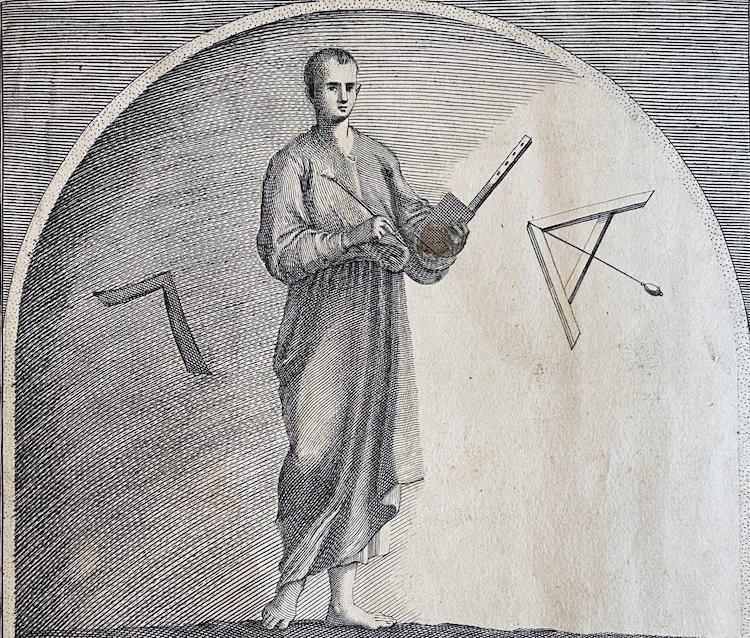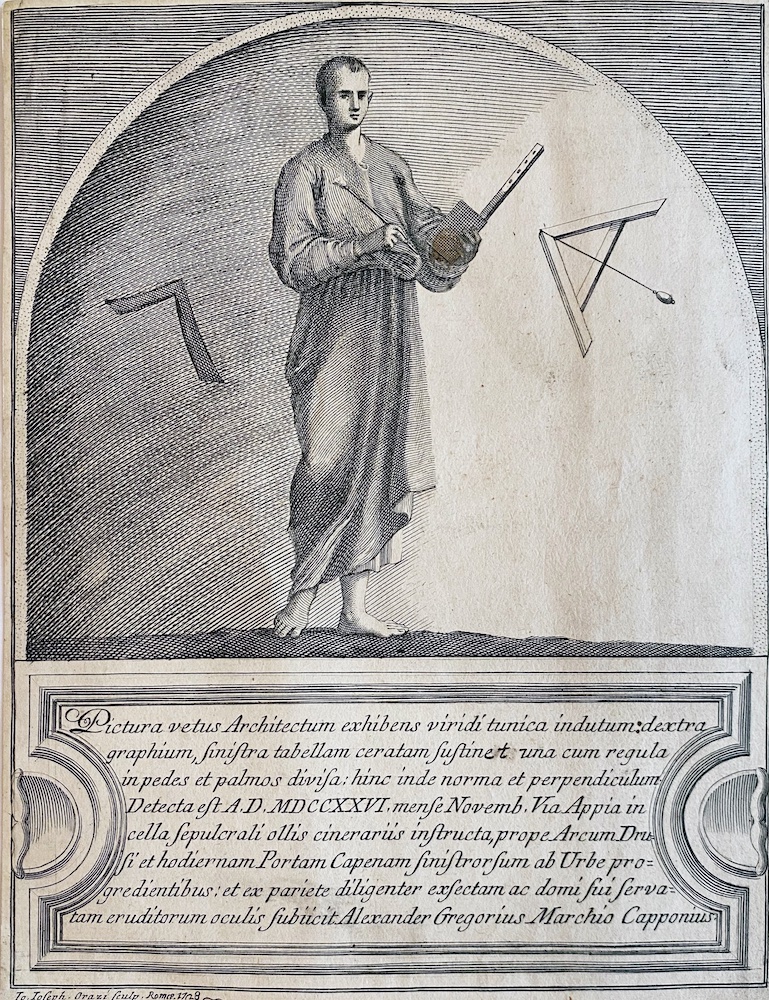How modern Masonic symbols connect us to antiquity


Some of our latest news
How modern Masonic symbols connect us to antiquity
The first speculative Masonic lodges didn't appear until the 17th century, but the symbols we've come to associate with Freemasonry are found on objects - such as paintings and engravings - from a much earlier time. How did this come about? And where does the modern ritualistic Freemasonry system originate? This week's object - an Italian engraving from 1728, copied from a Roman fresco from the first century BC - will help us to understand.

It shows an architect from antiquity, with a mason surrounded by the basic symbols of speculative Freemasonry - the plumb line and the square, as well as a ruler, which the architect holds in his hands. The inscription on the engraving reads: "Ancient image of an architect dressed in a green tunic and holding a stylus in his right hand and a wax tablet in his left. Also depicted is a square and plumb line. Discovered in November 1726 in the Via Appia (Appian Way) in a cell of the tomb, near the Arch of Drusus (...). Being carved out with a fragment of the wall, it was preserved in the house of Alexander Gregorius Marchio Capponius and then presented to the public".
The basic concept of the emergence of speculative, i.e. "philosophical" Freemasonry - when the temple is built first of all not physically, but in the soul - connects the very modern Freemasonry, which emerged in the 17th century, with medieval and ancient architecture. The development of this direction began at the end of the XVI century when the lodges of construction guilds began to gain access to persons who did not belong to the number of professional builders and engineers - educated, wealthy, and active people who sought to join the commonwealth of progressive like-minded people. It was then that they came up with the idea of organizing themselves on the principle of closed lodges of building fraternities, in which much attention was also paid to philanthropy and philosophy.
But the Italian engraving of 1728 we are looking at today refers us back to an even earlier time - Roman antiquity when the craft of masonry was mysterious and difficult to master. The Renaissance, at the height of which modern Freemasonry was born, re-popularised ancient values and philosophy.
This engraving shows the main symbols that would later be used by Freemasons - great lovers of allegories, symbols, and other mystical and secret signs designed to reflect their mental qualities, constructive intentions aimed at ennobling the world, the desire to know it and be in constant search of truth. You can differently interpret the meaning of the symbols, which many do, but above all, the plumb line is a symbol of steadfastness and straightness, the level symbolizes equality, and the square - poise and constant human striving for perfection. The compass is a symbol of wisdom, calculation, and prudence, while the trowel symbolizes the strengthening of brotherly ties.
Thus on the ruler presented in our image, we see 4 divisions, while in modern Freemasonry the ruler has 24 divisions, symbolizing, among other things, the length of the day. The four divisions on the ruler from the ancient example most likely remind us of the four seasons and the four elements. This once again proves the continuity not only of the instruments but also of their symbolic content.
The shape of the arch in which the image is inscribed and the proximity of the object itself to the Arch of Druse is also related to a key Freemasonry idea. The Royal Arch ritual, which originated in the 1920s and 18th century, claimed an older origin than other Masonic rituals. The Appian Way itself linked ancient Rome with Greece, Egypt, and Asia Minor, from which ancient knowledge, including geometry and architecture, is believed in Masonic tradition to have come.
Construction of our museum is reaching its final stage - please support us here so we can open the museum by summer https://masonicmuseum.eu/donate.html
 Museum
Museum